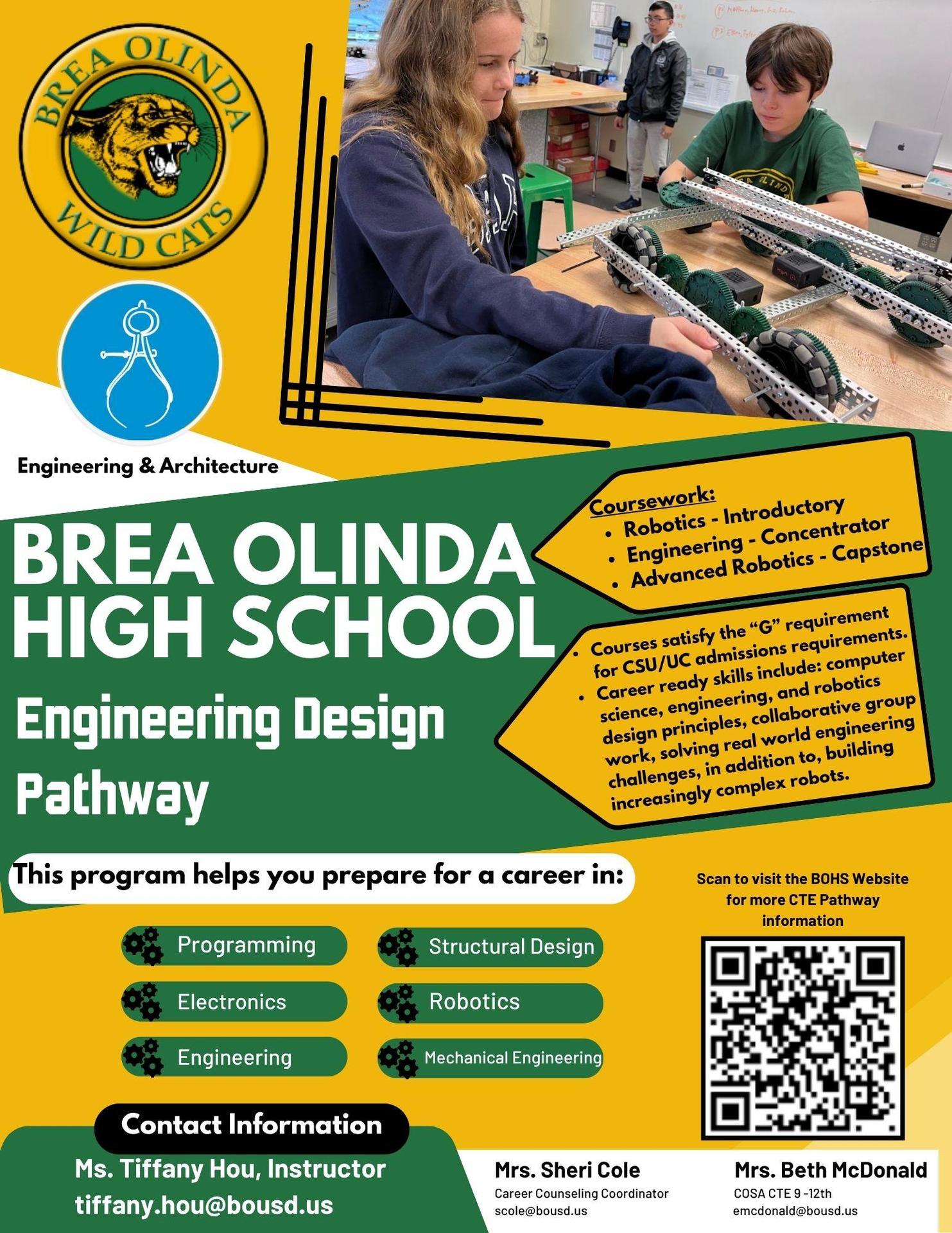Engineering Design

ENGINEERING & ARCHITECTURE SECTOR
Engineering Design Pathway
ENGINEERING 1: Engineering by Design
1541
Engineering by Design 1 is an introductory course that immerses high school students in the principles of engineering and design thinking. This hands-on course emphasizes problem-solving, creativity, and collaboration as students engage in real-world engineering challenges. Engineering 1 is UC approved as a “G” Elective requirement.
ROBOTICS
1542
This yearlong Robotics course offers students a hands-on, project-based introduction to computer science, engineering, and robotics design. Beginning with C++ programming fundamentals, students develop problem-solving skills while creating functional code and integrating sensors. Through the VEX Robotics Design System, students build, test, and control robots, applying core STEM principles in real-world challenges. The course explores CAD design using Autodesk Inventor and OnShape, guiding students to model and animate robotic components. Key engineering topics include drivetrain mechanics, object manipulation, speed and torque calculations, and lifting mechanisms. Students work in teams to design and iterate robots for competitive gameplay, documenting their progress in engineering notebooks. The curriculum emphasizes testing, prototyping, and system integration to refine robotic performance. In the final unit, students design and 3D print a custom robot part, applying advanced design and engineering analysis. Robotics is UC approved as a “G” Elective requirement.
ADVANCED ROBOTICS
1547
Students will work in engineering teams to design, build and test increasingly complex robots. The course will illustrate the importance of integrating sensors, complex machine control, and briefly discuss robot learning and multi-robot systems. Students will be expected to solve challenges using physical robots and computer simulations. Students will work in teams to complete a larger design problem and participate in local and regional VEX competitions. Special attention will be paid to the design process and its communication through both presentation and documentation. Students will explore additional hardware and software solutions to robotics problems. Students will learn advanced hardware and software techniques, as well as the mathematics and physics to understand them. Students will use additional hardware and software platforms to understand robotics applications (Arduino, parallax, etc.) Advanced Robotics is UC approved as a “G” Elective requirement.
